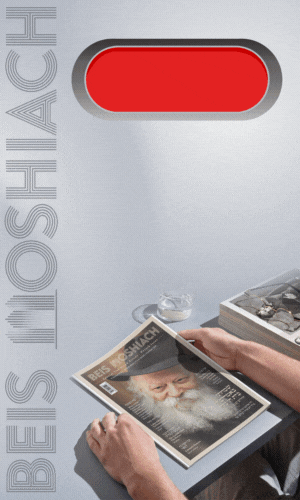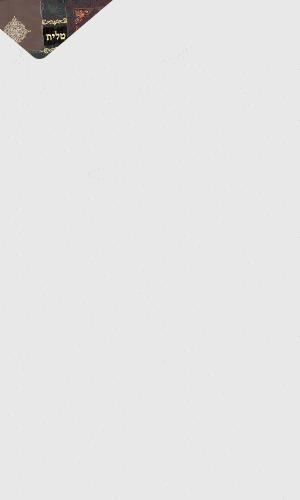Take A Flying Leap Into Redemption
At the Right Time: the sun and moon have separate calendars, that’s why every few years we set a leap year that bridges the two. What do you learn from a leap year? And what is special about this week? • Full Article
BEGIN WITH A GRIN
The people of Chelm were engaged in a heated debate and they decided to present the issue in question to the wise man of the city, “Which is more useful, the sun or the moon?”
“Simple,” he answered, “the moon. Because the sun only shines during daytime, when it’s bright anyway, whereas the moon shines at night.”
A LEAP IN TIME
This week, we will read parshas Tzav which is primarily about the days of consecration of the Mishkan. Chassidus teaches us that everything in Torah is amazingly exact, and from every seemingly minor detail we can and must learn a practical lesson. Also, the Rebbe innovates that every formulation of the Jewish calendar is by divine providence and we need to take notice of it.
Parshas Tzav is usually read in Nissan, on Shabbos HaGadol, the Shabbos preceding Pesach. Only in a leap year (like this year) do we read this parsha in Adar. What can we learn from the unique conjoining of Parshas Tzav and a leap year? And what practical lesson can we learn from the name of the parsha which is read (this year) in Adar Sheini, the extra month?
We know that every religion and nation has their calendar. In the Gemara it says “the nations of the world count according to the sun.” That means, that non-Jews arranged their calendar according to the cycle of the sun. The Gregorian calendar is arranged according to the sun. There are others (like Muslims) whose calendar is according to the lunar cycle. The Jewish people’s calendar, unlike those of other people, is based on… both! It’s according to both the solar and the lunar cycles. The months are according to the moon, while years and seasons are according to the sun. As the Rambam puts it (in the laws of Kiddush HaChodesh), “The months of the year are lunar months… and the years that we calculate are solar years.”
The problem is, there is a difference between a lunar year and a solar year, and not just a difference but a major difference. A lunar calendar has 354 days while a solar year has 365 days, an eleven-day difference! This difference adds up, every two to three years, to an entire month which is why we add a month, an amazing ‘Jewish innovation’ to make it a thirteen-month year in order to bridge the gap between solar and lunar years.
That’s all fine and good but what can we learn from a leap year, from the joining together of the sun and the moon? And how is this reflected in parshas Tzav? And most importantly, what does all this have to do with the coming of Moshiach?
Chassidus explains that the cycle of the sun is orderly and consistent like the light of the sun in which there are no changes. The sun shines every day in the same way it shone since the Six Days of Creation. Perhaps we don’t see the light of the sun if it’s a cloudy day or there is an eclipse but the sun is always shining in the same way, day in and day out.
The moon is altogether different. The Rambam says, “The moon has great major incongruities in its orbit.” It changes every day as does its light. At the beginning of a month, the moon appears small and there’s minimal light. In the middle of the month, the moon is full and there is much light until it diminishes and disappears at the end of the month. The sun represents steadiness while the moon represents renewal.
LEAP INTO ACTION
This symbolic difference between the sun and the moon exists in man’s service of G-d, for example, in the avoda of tefilla. On the one hand, the text of the davening is consistent. We say the same words every day (and sometimes, it’s tiresome). On the other hand, that text is meant to express man’s request for his needs, and man’s needs change from day to day. Sometimes we have more conscious intent in what we’re saying and sometimes less. Sometimes we need help with a livelihood and other times we plead more for help with children. During wartime (like now) we pour out our hearts at the words, “And all the enemies of Your people be speedily destroyed,” or in the words, “Place peace, good and blessing,” while other times (like before the war) our main concentration was on the words, “Return our judges as at first, and our advisors as in the beginning.” (And today too, perhaps there are those who are more intentional with both).
So, there is the joining together of the usual text with our changing emotions and intentions. This is one example of many about the need to connect the steady and orderly service of G-d with fresh and revitalized effort that increases from day to day. A person needs to learn the same Torah and he cannot add even one letter to it. Yet, he should be innovating in Torah and engaging in complex analysis, to the point of innovating “mounds of mounds of halachos.”
The steady, regular avoda is represented by the sun, while the renewal in the service of G-d is represented by the moon. The message and lesson learned from a leap year is to combine the two qualities in one service, the steadfastness and the renewal as they are united, so that all the usual aspects of service of G-d are done with a renewed energy and not like the “same old.” Conversely, the renewal in the service of G-d is not something that happens once in a while or infrequently but happens regularly. The person renews and intensifies his bond with the Creator every day, anew!
Serving G-d in this way, which unites the steadiness with renewal, the quality of the sun with the quality of the moon, is one of the promises of the Geula. The prophet Yeshaya says (30:26) that in the future, “The light of the moon will be like the light of the sun,” which means that in the Geula, the sun and moon will be equalized and their light will become unified. If we really internalize the above, we might conclude that this redemptive promise is not distant at all because we already have something like this now, in a leap year, because this is a year in which the cycles of the sun and the moon equalize.
In the writings of the Arizal we find a fascinating insight into the significance of the word “tzav.” The letters of the word equal 96, the numerical equivalent to two of G-d’s names: Keil (31) and Adnai (65). The name Keil represents a G-dly revelation, G-d’s kindness, as alluded to in the verse (Tehillim 52:3), “The chesed of Keil all day.” The name Adnai represents G-d being master of all, the Creator of all; as Kabbala puts it, the sefira of malchus.
When using examples for the differences between Hashem’s chesed and His malchus, Kabbala and Chassidus use the differences between the sun and the moon, with the sun representing Hashem’s chesed and the moon representing His malchus. The combining of both of these G-dly names in one word, “tzav,” represents the joining together of the sun and the moon, chesed and malchus, steadiness and renewal, or in the language of Kabbala, the “unification of the sun and moon.”
From all that we’ve said it turns out that there is no better time to read parshas Tzav than in the added month of a leap year, Adar Sheini. Now, in the leap year, we should learn an important lesson about bringing the Geula. In order to achieve the fulfillment of the prophecy of “the light of the moon will be like the light of the sun” in the Geula, we need to put in effort and combine the “sun” and the “moon” in our personal service of G-d. Practically speaking, our (regular) tefilla should be full of renewed energy and not only once in a while but every day! And we should inject some freshness and energy into our (regular) Torah study every time we open a book! And it’s very possible that it isn’t enough to give the same amount of tzedaka each time; we should add to it and not only sometimes but each time anew!
TO CONCLUDE WITH A STORY
We will end with a story from the Medrash (Yalkut Shimoni Rus #607) about the regular giving of tzedaka which led to an astonishing renewal:
There was once a pious man [chassid echad] with a righteous wife [isha kesheira], who lost all his money and became a hired hand. Once he was plowing a field and he met Eliyahu HaNavi disguised as an Arab. Eliyahu said to him, “You have six good years coming to you. Do you want them now or at the end of your life?”
The man said to him, “You are just a magician. I have nothing to give you. Please go away and leave me in peace.”
Eliyahu came back to him again and again. The third time, the pious man said, “Let me consult with my wife.”
He went to his wife and said, “This man has come to me three times to say that I have good six years coming to me. He wants to know when I want them—now or at the end of my life.”
She said, “Tell him to bring them now.”
He went to tell this to Eliyahu, who said to him, “Go home. Even before you get to the gate of your front garden, you will see blessing spread out in your home.”
The couple’s children had been playing in the dirt of their yard, where they found enough money to support their family for six years, so they called their mother. She ran out to tell her husband the good news even before he got to the gate of their house. He immediately thanked Gd and his mind was at ease.
What did his righteous wife do? She said to him, “Hashem has already extended His kindness to us and gave us money to sustain ourselves for six years. Let’s spend these six years helping others. Maybe then Gd will give us more.” So she did just that, and whatever [chesed] she did she told her young son, “Write down whatever we give,” and he did so.
At the end of the six years, Eliyahu came and said, “The time has come for me to take back what I gave you.”
The man said, “Whatever I took, I only took in consultation with my wife, so too, what I give back I will not return except in consultation with my wife.” So he went to her and said, “The old man has come to take back what’s his.”
She said to him, “Go tell him that if you found more trustworthy people, give them your deposit.”
Gd saw their deeds and all the acts of kindness that they did while they had wealth and decided to give them even more, to fulfill what it says (Yeshaya 32:17) “The act of tzedaka will be peace.”
26
Join ChabadInfo's News Roundup and alerts for the HOTTEST Chabad news and updates!











































